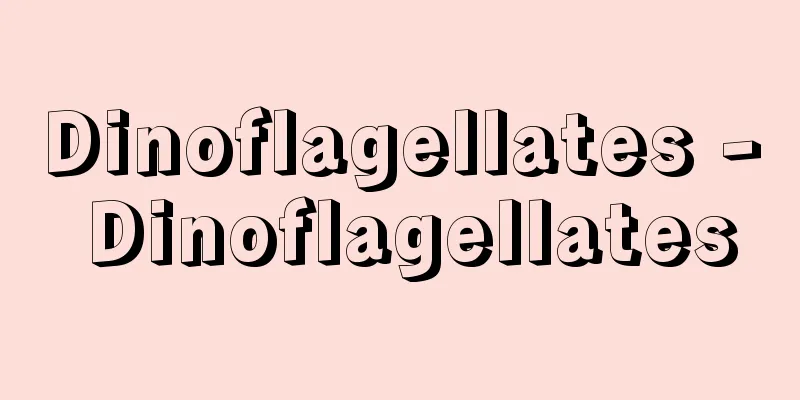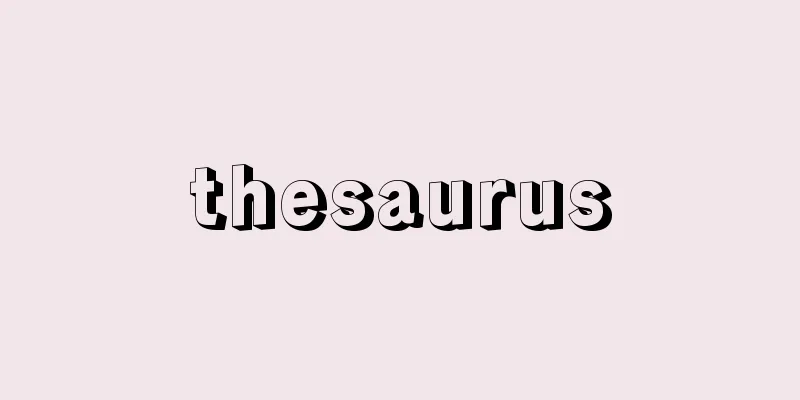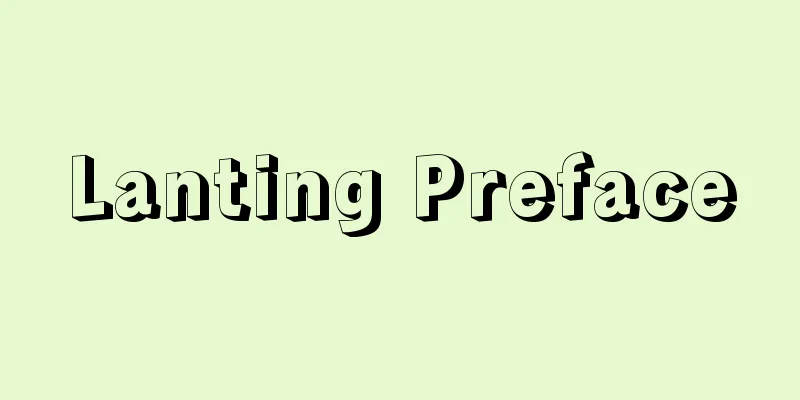Dinoflagellates - Dinoflagellates

|
A general term for single-celled organisms belonging to the Dinoflagellida order of the Phytoflagellate class of the phylum Sarcomastigophora of protozoa. The alternative names Dinoflagellates and Dinoflagellates are mistranslations. There are 1,000 known species, including fossils. They are primarily marine plankton, but in addition to sessile and freshwater species, many species parasitize or live symbiotically with various plants and animals. Most Zooxanthella species, representative brown symbiotic algae, belong to this class. Body length is 10-200 micrometers. Except for primitive species, the body is covered with two carapaces, one in front and one in back, and the typical carapace is made up of many more shell plates combined together like armor. The carapace is a type of pellicle formed inside the cell membrane, contains cellulose, and many species also have calcium salts deposited on it. There is a horizontal groove that surrounds the center of the body horizontally, and a vertical groove that runs almost perpendicular to it toward the rear of the body. They usually have two flagella, but the transverse flagellum is one-winged, emerges from a small hole near the intersection of the two grooves, and pulsates in the transverse groove. The longitudinal flagellum is whip-shaped or sometimes feather-shaped, emerges from a small hole in the longitudinal groove, and extends backward, but is not motile. Some species produce stingers or tentacles from the longitudinal groove. They usually have chromosomes, and their body color is yellow or brown, sometimes blue or green, but many species lack chromosomes. In addition to chlorophyll a, they contain various carotenoid accessory pigments, and mainly synthesize starch. Most freshwater species have a single developed eyespot. They are characterized by a variety of nutritional methods, and regardless of whether they have photosynthetic ability, some species extend reticulated pseudopods from the numerous small holes in their carapace to prey on solid food, or directly absorb organic matter, and some even live in symbiosis with bacteria and algae. In addition to bifidity, many species reproduce by forming spherical or crescent-shaped cysts, but some species reproduce sexually, and some species undergo a palmellar stage in which an individual that has lost its flagellum is enveloped in gelatin and divides to form a mass. The nucleus is a specific chromosomal nucleus, and the chromosomes remain even during interphase, in a pattern similar to bacterial circular strands of DNA. They are important as a source of nutrition for aquatic animals, but are also a cause of red tides. Well-known species include Noctiluca , Ceratium , Prorocentrum , Gonyaulax , and Gymnodinium . [Keiichi Ishii] Source: Shogakukan Encyclopedia Nipponica About Encyclopedia Nipponica Information | Legend |
|
原生動物の肉質鞭毛虫門植物性鞭毛虫綱の1目Dinoflagellidaに属する単細胞生物の総称。別名の双鞭毛虫類あるいは恐鞭毛虫類は誤訳とされている。化石種も含めて1000種が知られている。主要な海産プランクトンであるが、固着種や淡水産のほかに、各種の動植物に寄生や共生するものも多い。褐色共生藻の代表であるゾーキサンテラZooxanthellaの多くはこの類である。体長10~200マイクロメートル。原始種を除き、体は前後2枚の甲で覆われ、典型的な甲はさらに多くの殻板が鎧(よろい)状に組み合わさってできている。甲は細胞膜の内側に形成されたペリクルの一種で、セルロースを含み、さらにカルシウム塩を沈着させた種も多い。体の中央部を水平に取り巻いて横溝があり、それとほぼ直角に体の後方に向かう縦溝がある。普通、2本の鞭毛をもつが、横鞭毛は片羽型で両溝の交点付近の小孔(こあな)から出て横溝中で波動する。縦鞭毛はむち型、ときに羽型で縦溝中の小孔から出て後方に伸びるが運動性はない。縦溝から刺針や触手を生じるものもある。普通、色素体をもち、体色は黄色ないし褐色で、ときに青色ないし緑色を示すが、色素体を欠く種も多い。クロロフィルaのほか、各種のカロチノイド系補助色素を含有し、おもにデンプンを合成する。淡水種は発達した眼点を1個もつものが多い。多様な栄養法が特徴で、光合成能の有無にかかわらず、甲にある多数の小孔より網状擬足(ぎそく)を出し固形の餌(えさ)を捕食し、あるいは有機物を直接吸収し、さらに細菌や藻類を共生させているものなどがある。増殖は斜二分裂のほかに、球形または三日月形のシスト(包嚢(ほうのう))をつくるものが多いが、有性生殖をするものや、鞭毛を失った個体がゼラチン質に包まれて分裂し、集塊をつくるパルメラ期のある種類も知られている。核は特異的な染色体核で、間期でも染色体は残存し、細菌型の環状DNAの束と類似の様式である。水産動物の栄養源として重要であるが、赤潮の原因でもある。夜光虫Noctiluca、ケラチウムCeratium、プロロケントルムProrocentrum、ゴニアウラックスGonyaulax、ギムノディニウムGymnodinium、などが有名。 [石井圭一] 出典 小学館 日本大百科全書(ニッポニカ)日本大百科全書(ニッポニカ)について 情報 | 凡例 |
>>: Dormition Cathedral (Vladimir) - Usupenskii-seido
Recommend
Bonds - Insurance
Securities issued by the state, local governments...
Regensburg - Regensburg (English spelling)
A city in Bavaria in southeastern Germany. It is ...
Song title - Kyokudaimoku
...In Keizui, the lotus dance is performed at the...
Attar system - Attar system
… [National Structure] Regarding the actual state...
Le Breton, G. (English spelling) LeBretonG
…A palace associated with the French royal family...
Rotating disk extraction column
...In a spray tower, the continuous phase is sign...
Nine-hole shellfish
...There is also a story about a cave behind the ...
Azione Cattolica (English)
...This marked the end of one cycle of the Cathol...
Iznik [Lake] - Izuku
...A town in Bursa Province located in western Tu...
Concanavalin A
A type of lectin obtained from jack beans. It is a...
Aerarium saturni - Aerarium saturni
…The indirect taxes of the Republic included cust...
Kaori Hosoki - Saiki Koi
Year of death: September 10, 1870 (October 4, 1870...
Orto state
…It has the same structure as the bound state of ...
Andreev, VV (English spelling) AndreevVV
…The unique triangular body was already seen in s...
Limonium reticulatum (English name) Limonium reticulatum
… [Eiichi Asayama]. … *Some of the terminology th...









